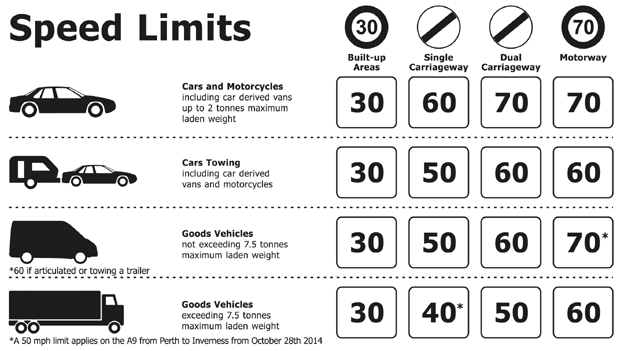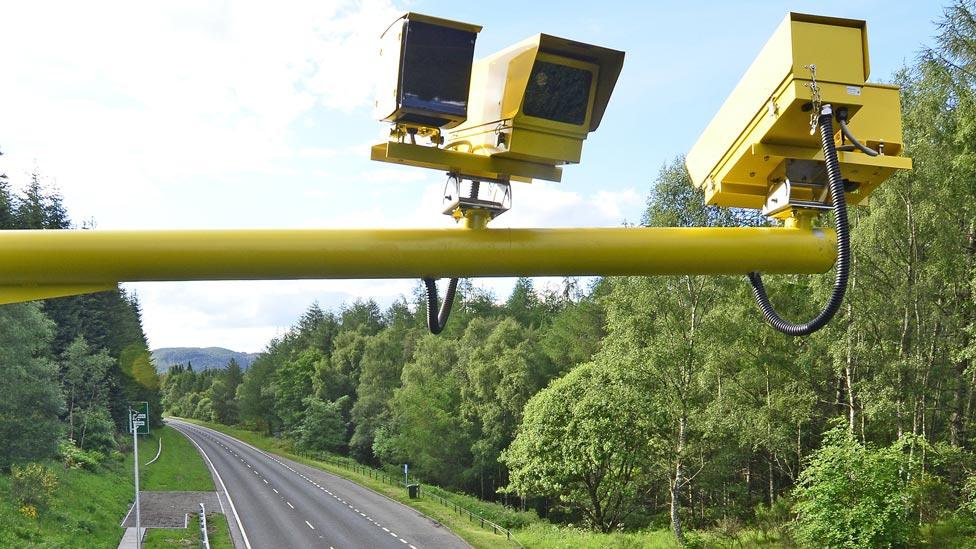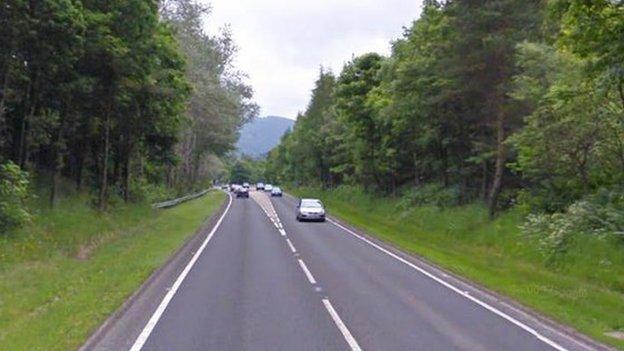A9 average speed cameras switched on
- Published
Cameras have been installed at 27 sites along the route
Britain's longest network of average speed cameras have been switched on.
The cameras have been installed at 27 sites on the A9 between Inverness and Dunblane at a cost of £2.5m.
The speed limit for HGVs using the A9 has also been raised from 40mph to 50mph on single carriageways as a pilot project, following calls from hauliers.
Transport Minister Keith Brown said both measures would save lives on the road, which is seen as being one of the most dangerous in the country.
The cameras have been placed on single carriageway sections of the A9 between Inverness and Perth. From Perth the road is dual carriageway.
It is hoped raising the speed limit for HGVs will reduce driver frustration caused by slower vehicles on the busy road, which is the main route between central Scotland and the Highlands.
Fatal and serious accidents on the single carriageway between Perth and Inverness are significantly higher than the national average.
'Reductions in fatalities'
Work on the new camera system, which got under way in May, saw columns, cameras and infra-red lighting masts erected on the single carriageway sections.
Earlier this year, figures suggested that the presence of the newly-installed cameras was already cutting drivers' speed - even though they had not yet been switched on.
Mr Brown said action would be taken against anyone caught breaking the speed limit by the cameras.
He added: "First and foremost they will make that road safer. All the evidence we have had from other sites show reductions in fatalities. Surely everyone should welcome that."

A Transport Scotland sticker showing speed limits on the A9
Neil Greig, director of policy and research at the Institute of Advanced Motorists, described the camera network as "one of the most innovative and important road safety schemes in Scotland for years".
He added: "With full dualling still over 10 years away it is vital that safety on the A9 is maintained and average speed cameras are a tried and tested way to achieve this.
"It's a big change and some drivers will have to rethink their whole approach to travelling along the route."
Environmental group WWF Scotland has called for average speed camera schemes to be introduced on more of the country's roads and motorways "to help save lives and cut pollution".
Dangerous overtaking
Climate and energy policy officer Gina Hanrahan said: "Alongside the clear safety benefits, enforcing speed limits on trunk roads using average speed cameras and other tools is an effective and cost-effective way to reduce climate emissions, as well as fuel costs for motorists.
"To reduce health-threatening levels of air pollution and meet our climate targets, the use of average speed cameras and other approaches to help reduce excessive speeds should be seriously considered on other major roads across Scotland."
But the camera system has been opposed by campaign group A9 Average Speed Cameras Are Not the Answer, which has called for action to tackle dangerous overtaking on the road.
Inverness, Nairn, Badenoch and Strathspey Liberal Democrat MP Danny Alexander said regular users of the road were opposed to the system.
He said the scheme should be scrapped and the dualling of the A9 accelerated instead.
The installation of the cameras comes as the Scottish government moves forward with its plan to make the route a dual carriageway for its entire length.
The £3bn project involves the upgrade of 80 miles of single carriageway along the A9 between Perth and Inverness by 2025.
- Published9 October 2014

- Published15 September 2014

- Published18 June 2014

- Published27 May 2014

- Published1 April 2014

- Published28 March 2014

- Published28 February 2014

- Published25 February 2014
